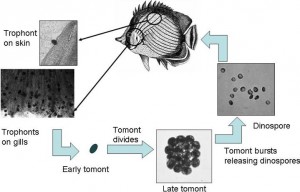Brew12
Electrical Gru
View BadgesExcellence Award
Reef Tank 365
Article Contributor
Moderator Emeritus
North Alabama Reef Club
Article Administrator
My Tank Thread
I've thought about that, and I've thought about putting the fish in the tank for a day and then pulling it to watch for symptoms. The downside is that any active parasites may not have found the fish in that period of time. There isn't an easy answer, unfortunately. Both ways would likely show a severe infestation, but may not detect a few stragglers.How about taking tank water and setting up a smaller tank with the water from the DT- place the molly in there and see if the signs appear. That way, you know if the DT still has active velvet but not re-setting the fallow period? THoughts?



















